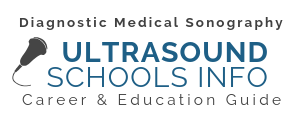From General DMS to Telemedicine, learn what Sonographers do every day
Sonographers play an important role in the lives of their patients. We’re with them as they hear their baby’s heart beat for the first time, we help the physicians diagnose and treat disease, and we provide support during what can be very emotional circumstances.
What Does an Ultrasound Technician Do?
 An ultrasound technologist, also referred to as a sonographer or diagnostic medical sonographer, does more than just operate imaging equipment. They balance patient interaction and technological performance with a firm knowledge of anatomy and pathology by working cohesively with a healthcare team.
An ultrasound technologist, also referred to as a sonographer or diagnostic medical sonographer, does more than just operate imaging equipment. They balance patient interaction and technological performance with a firm knowledge of anatomy and pathology by working cohesively with a healthcare team.
Sonographers use imaging equipment that non-invasively emits sound waves directed towards internal organs, blood vessels, tissues and other structures in order to detect abnormalities. A sonographer’s job description entails using this specialized technology as well as assisting physicians and other members of the healthcare team with interpreting images. Sonographers also work directly with patients by preparing them for procedures and keeping track of their history. While ultrasound technicians work in a variety of locations such as hospitals or imaging clinics, their general job duties are consistent:
Essential Job Duties and Requirements
- Perform ultrasound procedures, ensuring the transducer (probe) captures high-quality images for accurate diagnosis.
- Clearly explain the ultrasound process to patients, addressing any questions to help ease concerns.
- Maintain and calibrate ultrasound equipment while ensuring a sterile and safe imaging environment.
- Apply ultrasound gel to the designated area for optimal image clarity and patient comfort.
- Assess image quality and make real-time adjustments to enhance diagnostic accuracy.
- Present images and preliminary observations to physicians and collaborate with the healthcare team.
- Accurately document patient records and include relevant medical notes from the ultrasound procedure.
Physical Requirements
Sonographers must also meet certain physical demands to perform their job effectively:
- Lift and maneuver equipment or assist patients, often requiring the ability to lift at least 50 pounds.
- Stand for extended periods while performing imaging procedures.
- Work 12-hour shifts in a hospital or clinical setting, including nights, weekends, and on-call hours as needed.
What Skills do Sonographers Need to Have?
Healthcare professions and other service industry related careers require a wide-range of skills, from technical know-how (commonly known as hard skills) to good interpersonal communication (the soft skills). In order to be a successful and well-rounded sonographer, it’s necessary to have both. Hard skills represent the abilities a professional must be able to do to accomplish their job. Soft skills are the abilities a professional must utilize when carrying out the hard skills.
| Hard Skills | Soft Skills |
|---|---|
| Hand-eye coordination | Compassion and empathy |
| Ability to lift, push, pull over 50 lbs | Staying calm under pressure |
| Dexterity to operate equipment | Listening and communication skills |
| Knowledge of anatomy/physiology | Ethical conduct |
| Understanding of pathophysiology | Independent work ethic |
| Reading, writing, and interpretation of technical findings from exams |
Ability to function as part of a team |
A Closer Look at Sonography
Diagnostic vs. Therapeutic Ultrasound
Ultrasound techs are trained to identify normal anatomical structures as well as detect structural and functional abnormalities. For example, a vascular sonographer may detect a blockage of blood flow to a patient’s brain which would explain their recent stroke symptoms. This type of ultrasound is known as diagnostic ultrasound.
Ultrasound can also be used therapeutically in the treatment of disease, known as therapeutic ultrasound. This involves directing energy into tissues, nerves, and other aspects of the body in order to produce beneficial physiological effects. For example, a physical therapist may use ultrasonic technology to treat a patient with a musculoskeletal injury.
Medical Imaging Modalities
Ultrasound technicians differ from radiologic technicians who perform X-rays, MRIs and CT scans in that their equipment employs sound waves instead of radiation. Despite this difference, their work often compliments one another. For example, a radiologic technician will often take a mammogram of the breast in conjunction with a sonographer performing an ultrasound.
A sonographer’s job description varies depending on where they work. According to the Bureau of Labor Statistics (BLS), the majority of diagnostic medical sonographers worked in hospitals. In a hospital setting, 12 hour shifts are not uncommon, and a sonographer can expect an average of 12-15 patients in a day. Sonographers will work closely the healthcare team, receiving referrals from physicians and reporting any concerns back immediately.
Sample Ultrasound Technician Job Postings
Job descriptions and postings vary, depending on the employer and specialty involved. As follows is an example of a typical job posting, describing the professional tasks of the sonographer to be hired:
Seeking Diagnostic Medical Sonographer
- Responsible for performing all ultrasound procedures including those within the department, at the bedside, and in the OR.
- Works closely with the radiologist and other licensed physicians presenting images and data for interpretation and assisting with interventional procedures.
- Shows independent judgment when performing procedures and when addressing difficult or unusual situations.
- Responsible for evaluating images for technical quality.
- Utilizes PACS (picture archiving and communications system) with accuracy.
- Accepts additional assignments and tasks as needed for the department.
- Provides ultrasound department coverage after hours when participating in on-call rotation.
- Assesses patient to determine ability to undergo requested examination.
Emerging Opportunities
The field of medical imaging is constantly changing, with new technology bringing new opportunities. Here are just a couple of the emerging fields within diagnostic medical sonography.
Traveling Sonographer
A number of ultrasound staffing agencies give sonographers the option to take their vocation on the road.
Traveling ultrasound technicians generally work on short term contracts, filling in for sonographers who go on maternity or sick leave, vacation, or extended leaves of absence. It’s a great experience for ultrasound techs to experience different parts of the country and a variety of workplaces.
Reputable staffing agencies should cover travel, housing and per diem expenses. Additionally, traveling sonographers often earn more during their contract than they would working the same period as a permanent employee, and the work schedule tends to be more flexible.
To discover more about being a traveling sonographer, check out Stephanie Eisler’s The “Nanny McPhee” of Ultrasound Part 1 and Part 2, and our interview with President of SonoTemps Inc., Dave Felix.
Learn more about additional career paths available to working sonographers.
Telemedicine
Telemedicine involves two or more healthcare professionals, who are in different geographic locales, sharing medical information via electronic or telecommunications. What was once a rarity is becoming commonplace due to the need to reduce the spread of Covid-19.
Ultrasound technologists play an important role in telemedicine. At a rural hospital or health center, for example, there may be limited times when a specialized physician, like a cardiologist or gastroenterologist, is actually on site. In these situations, sonographers and other medical imagers can work directly with patients at the facility and communicate their findings with the appropriate physician via telemedicine.
Getting Started on a New Path
Numerous colleges and universities offer ultrasound degree programs that will provide aspiring sonographers with the theory and practice (through labs and clinical internships) they need to be a successful medical sonographer.
Before applying for a program, it’s important to ensure it will qualify to you to become certified through the ARDMS (American Registry for Diagnostic Medical Sonography), a credential heralded by the American and global medical community.
Other pages you might like:
- Who’s Who in Sonography – Explore the various organizations within ultrasound
- History of Ultrasound – Trace ultrasound back to its beginnings in 1794
- Ultrasound Technology – Learn how ultrasounds work


